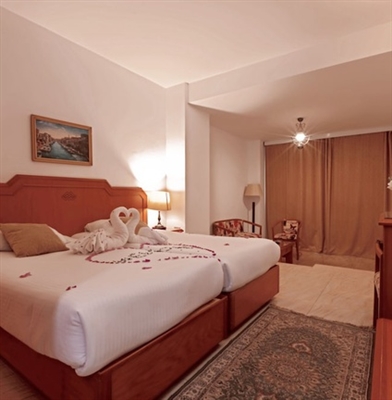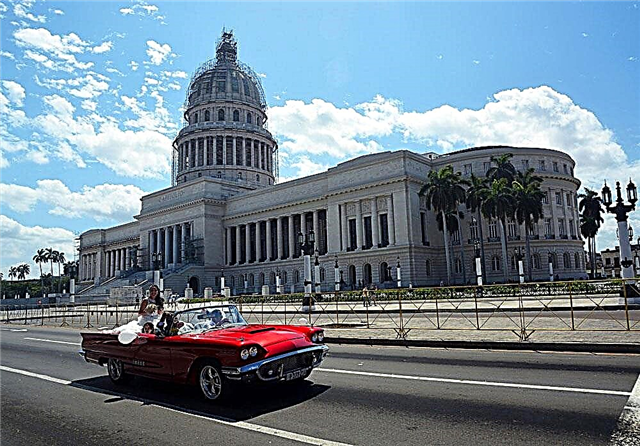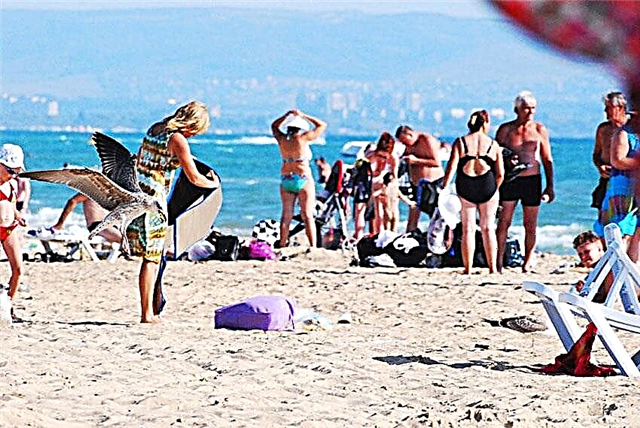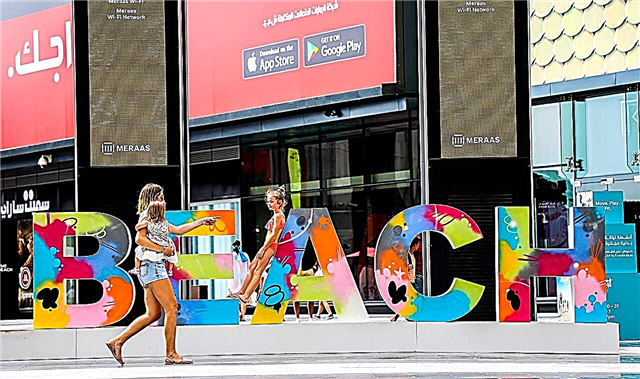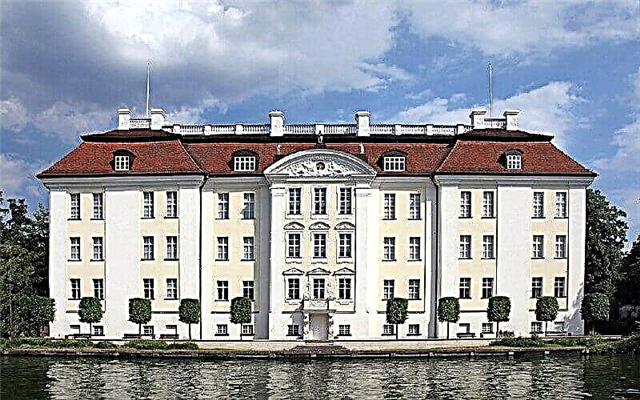After the powerful bombing of the Second World War, Berlin lay in ruins. It can be logical to assume that there was nothing left - no sights, no old quarters, and the city was literally rebuilt. But a surprise awaits tourists - many Berlin palaces, erected under the Prussian rabbits, survived, and those that were destroyed have been completely restored to this day.
Most of the palace complexes, formerly the residences of monarchs or the villas of wealthy families, house museum collections and concert halls. Also, tourists will be able to appreciate the beauty of historical interiors or stroll through the landscaped parks that are spread around graceful buildings in the style of classicism, baroque and rococo.
The most beautiful palaces in Berlin
Charlottenburg
The palace is located in the city district of the same name. It was built in 1699 in the Baroque style for Sophia Charlotte, the wife of Frederick I. Charlottenburg is surrounded by a magnificent landscaped park. During the tour, tourists visit Friedrich's apartments, the reception hall, the porcelain room, the Schinkel pavilion with a collection of paintings from the early 19th century and the greenhouse. After the Second World War, the palace lay in ruins, but then it was restored.

Bellevue
The palace in the style of monumental classicism stands in the Tiergarten park. After World War II, in the course of several reconstructions, the interior space was restored according to the surviving sketches of historic interiors of the 18th century. In the 1950s, Bellevue Palace was more often used as a concert venue. Today, it has been the official residence of the President of Germany since 1994.

Köpenick
The facility is located on the island of Köpenick. It was built in the 17th century as the residence of Frederick III. The interior and exterior of the palace has been fairly well preserved, and today visitors can appreciate the serene beauty of the Baroque architecture and the decoration of the halls. Köpenick often hosts contemporary art vernissages and exhibitions of folk art, you can also visit the concert hall and listen to the performance of the orchestra.

Glienicke hunting palace
The mansion of Friedrich Wilhelm I, built at the end of the 17th century. It is located in the Wanze area on the banks of a small pond surrounded by a park. Glienicke was not badly damaged during the Second World War. Over the years, the premises of the castle served as a hospital, a place for the production of wallpaper, an orphanage and a youth center. In the 2000s, repair work was carried out several times. The premises are used by various training organizations.

Glienicke Palace
The complex of the XVIII-XIX centuries, built in the style of strict classicism. From the outside, the building looks rather modest, but inside the luxury of the royal chambers is surprising. The architectural ensemble includes the palace itself and two wings: "Great curiosity", "Little curiosity". Inside you can look at the halls, salons, library and bedrooms. Since the 1980s, there has been a museum on the territory of Glienicke.

Friedrichsfelde
The palace is located on the territory of the Berlin Zoo. It was built at the end of the 17th century in the classical style by order of a Dutch shipowner. The structure was ignored by tourists for a long time, since their main goal was still to visit the menagerie, but then guests began to drop in in Friedrichsfeld to visit the museum and look at the historical interiors. Around the palace there is a landscape park with numerous sculptures.

Brits
Since the 16th century, a half-timbered mansion, surrounded by a park with fountains and sculptures, stood on the site of a modern palace. After the land changed hands, the building and the surrounding area underwent significant reconstruction, but the general appearance was still preserved. Today, a museum and a cultural fund are located inside the premises, free spaces are used for organizing temporary exhibitions.
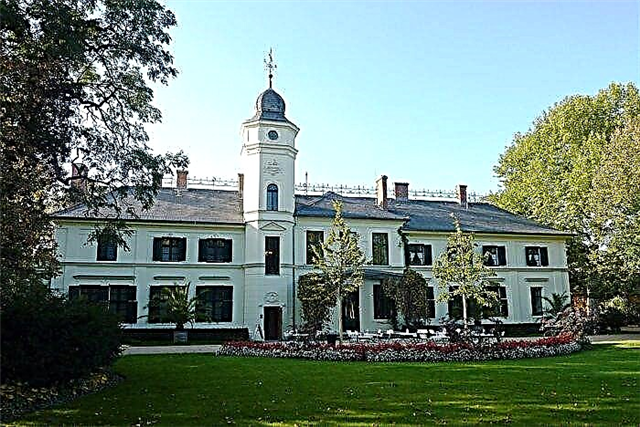
Schönhausen
The palace was built in the Dutch style in the 17th century; under Queen Elizabeth Christina, it was rebuilt in the Baroque style, decorating the ballroom with magnificent elements. Today it hosts receptions and concerts. In the second half of the 20th century, Schönhausen was used to meet official delegations; today it is open for free visits. The palace is located in Berlin's Pankow district.

Bisdorf
The building was erected in the 19th century in the style of the Italian Renaissance. It was built as a private villa and changed several owners in several decades. For quite a long time, Bisdorf stood in desolation, in 1945 it survived a fire. In 1979, the palace was listed as a cultural monument. At the moment, the building belongs to the state; an exhibition center is located under its roof.

Grunewald hunting palace
More likely not a palace, but a modest hunting lodge, but nevertheless one of the oldest buildings in Berlin. Grunewald stands on the shore of a lake in the Dahlem region. The building was erected in the 16th century in the early Renaissance style by order of Joachim II Hector, the Elector of Brandenburg. Today, it houses art exhibitions by German and Dutch painters, as well as a collection of hunting exhibits.

Pfaueninsel
The palace is often visited by excursion groups. Pfaueninsel is one of the palaces and parks of Potsdam, included in the UNESCO World Cultural Heritage List. It is located on the territory of the island of the same name in the southwest of Berlin. The castle was built by order of Frederick Wilhelm II in the English style. It is believed that the ruler deliberately chose such a secluded and romantic place for a date with his mistress.

Ephraim Palace
One of the adornments of the historic district of Mitte is the magnificent Ephraim Palace, built in the 18th century in the style of German Rococo. The building was erected by order of a Prussian Jew who enjoyed special privileges at the court of Frederick II. The historic building was demolished in 1936 when necessary and rebuilt in the 1980s. In our days, intercalated spaces are located under the roof of the palace.

Podewils Palace
Palace of the early 18th century, built in the Baroque style by the architect J. de Bodt. At the end of the 19th century, the building was bought by the city authorities and the collections of the Brandenburg Provincial Museum were placed in its premises. In 1920, the administration of the Mitte district moved here. During the Second World War, Podewils was completely destroyed, but after a few years it was rebuilt.

Tegel
The complex is located in the city district of the same name. It can even be said that it is the main decoration of this part of Berlin. In the middle of the 16th century, a hunting estate stood on this site, which was rebuilt at the behest of Friedrich Wilhelm of Brandenburg. As a result of another reconstruction in the 19th century, Tegel acquired the features of classicism. Today, the building houses a museum dedicated to the Humboldt family.

Palace of the Crown Princes
A classic 17th century building on the boulevard Unter den Linden, erected for the ruling dynasty of Prussia. The historic building did not survive the Second World War; it was completely destroyed during the bombing on March 18, 1945. The complex was restored in the 1960s. Today it is used as a venue for exhibitions and cultural events.





